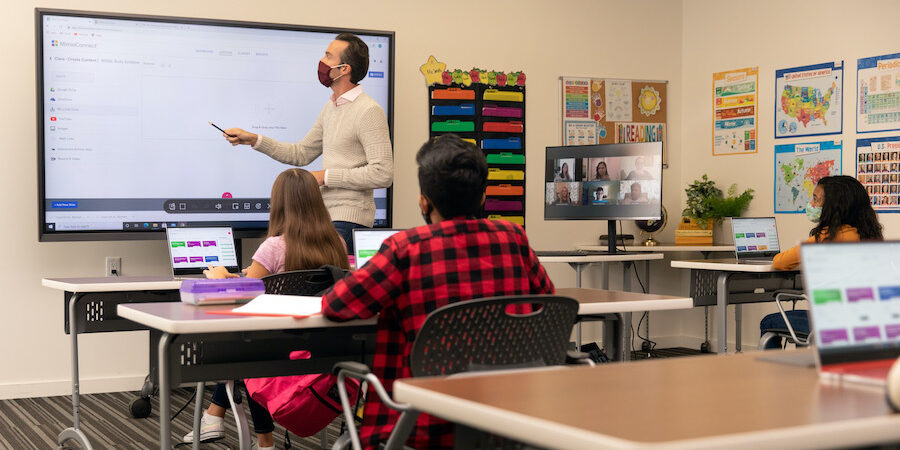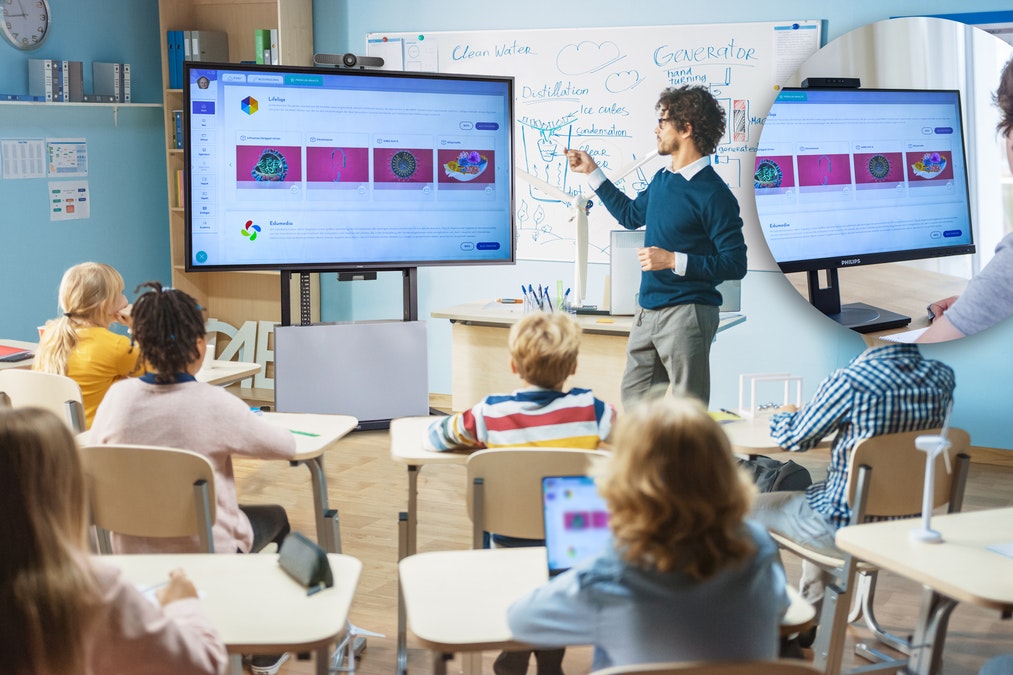A Comprehensive Overview to the Different Knowing Methods in Primary Scientific Research Direction
The exploration of diverse discovering approaches in key scientific research instruction presents a possibility for teachers to enhance trainee interaction and comprehension dramatically. By checking out hands-on understanding strategies, inquiry-based techniques, and collective strategies, we can recognize efficient techniques that provide to various finding out styles. Additionally, the integration of modern technology and distinguished instruction plays an important role in promoting a comprehensive setting. Nevertheless, the question stays: how can these techniques be effectively carried out in the class to maximize their influence? The solution hinges on a better analysis of each technique and its ramifications for training science.

Hands-On Discovering Strategies
Hands-on learning techniques play a critical function in key scientific research guideline, engaging students in active exploration and experimentation. These approaches allow learners to interact directly with materials and phenomena, fostering a deeper understanding of clinical principles. By utilizing manipulatives, models, and real-life experiments, educators create a setting where pupils can observe, assume, and examine their ideas.
Such techniques not only enhance understanding yet additionally grow important reasoning and analytical abilities. When pupils get involved in tasks like developing easy machines, growing seeds, or performing chain reactions, they are motivated to ask inquiries and look for responses with their own observations. This experiential strategy aids to demystify complicated scientific principles, making them a lot more obtainable and relatable.
Additionally, hands-on knowing advertises collaboration amongst peers, as trainees typically operate in teams to conduct experiments or share searchings for. This team effort not just improves their understanding experience however additionally establishes important social abilities. Eventually, incorporating hands-on methods in key scientific research direction cultivates a lifelong love of understanding and interest about the all-natural globe, laying a strong structure for future scholastic searches in science and past.
Inquiry-Based Understanding
Inquiry-based learning is a training method that motivates pupils to ask inquiries, examine sensations, and create their own understanding of clinical concepts. This approach moves the emphasis from conventional teacher-led guideline to a more student-centered experience, where learners take the effort in their instructional journey. By fostering curiosity, inquiry-based discovering advertises much deeper engagement with the material, enabling trainees to discover subjects in a meaningful context.
In technique, this technique typically entails hands-on experiments, monitorings, and critical thinking activities that line up carefully with the clinical approach. Pupils are urged to formulate theories, design investigations, and analyze data, which cultivates important abilities such as logical and analytic thinking. The function of the teacher in this framework is to help with exploration, assisting trainees with the query process while encouraging independent thought and collaboration.
In addition, inquiry-based understanding supports a feeling of possession over the discovering process, motivating students to seek expertise actively. This method not just boosts understanding of clinical principles however likewise fosters a long-lasting love for discovering, furnishing students with the abilities needed to browse a significantly complicated world.
Collaborative Learning Approaches
Collaborative discovering approaches encourage pupils to engage in significant communications with peers, fostering a shared obligation for their instructional outcomes. In primary science instruction, these methods encourage learners to work together to check out clinical principles, resolve troubles, and perform experiments (primary science tuition Singapore). By taking part in group activities, trainees can take advantage of varied viewpoints, enabling richer understanding and retention of scientific understanding
One trick facet of joint understanding is the focus on interaction abilities. Pupils must articulate their ideas, listen actively to others, and work out ideas, all of which are crucial competencies in both real-world and academic contexts. This social communication not just boosts their understanding of scientific concepts yet additionally advertises team effort and dispute resolution skills.
When pupils see i was reading this the worth of their contributions within a group, they are much more likely to take ownership of their learning journey. On the whole, integrating joint knowing approaches in main scientific research instruction cultivates a vibrant knowing atmosphere that prepares pupils for future academic and social difficulties.
Modern Technology Integration in Science
The assimilation of technology in primary science direction boosts learning experiences by offering cutting-edge devices and sources that support various mentor techniques, including collective discovering - primary science tuition Singapore. The usage of electronic systems, simulations, and interactive applications permits students to engage deeply with scientific concepts, assisting in an extra hands-on method to knowing
Online labs, for circumstances, enable learners to conduct experiments safely and efficiently, advertising inquiry-based understanding. These devices can imitate real-world clinical circumstances, enabling trainees to picture complicated processes that would be difficult to replicate in a conventional classroom setting. Modern technology cultivates communication and partnership among trainees, as they can share findings and function together on projects via on the internet platforms.
Additionally, multimedia discussions and academic video clips can enhance lessons by satisfying varied discovering styles, making abstract principles a lot more easily accessible. Data evaluation tools additionally empower pupils to gather and analyze clinical information, strengthening vital thinking abilities. Overall, the critical incorporation of technology in key scientific research direction not just enhances engagement but likewise prepares students for a technically innovative culture, equipping them with necessary skills for future scientific undertakings.
Distinguished Direction Strategies
Separated guideline approaches are vital for addressing the diverse requirements of students in primary science education and learning. These approaches enable educators to tailor their teaching approaches to fit differing capacities, rate of interests, and discovering designs within the class. By utilizing distinguished instruction, instructors can produce a comprehensive environment that fosters engagement and enhances More Help understanding of scientific ideas.
One efficient method is to make use of adaptable organizing, which permits pupils to team up with peers at comparable ability degrees or with differing point of views. This method motivates peer knowing and promotes vital thinking. Furthermore, providing choices in projects can empower pupils, permitting them to choose jobs that resonate with their interests while still meeting curricular objectives.
Moreover, including tiered jobs is an additional useful method. By developing jobs with differing levels of intricacy, instructors can make sure that all students are suitably tested, no matter their proficiency. Making use of developmental assessments to gauge comprehending further makes it possible for instructors to adjust their educational techniques dynamically, guaranteeing that each student gets the support they require.
Eventually, implementing set apart direction strategies in key scientific research education not only enhances pupil knowing end results however additionally cultivates an interest for science, preparing pupils for future academic quests.

Verdict
In recap, effective primary science direction requires a complex strategy that encompasses hands-on knowing, inquiry-based methods, and collective methods. The assimilation of modern technology and differentiated instruction even more caters to diverse knowing styles, fostering an environment conducive to expedition and crucial reasoning.
The expedition of varied learning techniques in primary scientific research instruction presents an opportunity for instructors to boost trainee engagement and understanding dramatically.Hands-on understanding techniques play a critical function in main science instruction, engaging students in energetic expedition and testing.Inquiry-based knowing is an instructional strategy that urges trainees to ask questions, explore sensations, and construct their very own understanding of clinical ideas.Collective learning strategies equip students to involve in significant communications with peers, promoting a shared duty for their academic end results. Generally, incorporating joint understanding strategies try here in main scientific research direction grows a dynamic understanding atmosphere that prepares pupils for future academic and social obstacles.